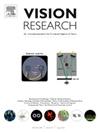电磁刺激治疗弱视:新兴技术及其疗效的系统综述
IF 1.4
4区 心理学
Q4 NEUROSCIENCES
引用次数: 0
摘要
弱视,长期以来被认为是无法治疗的成人,可能响应电磁刺激(EMS)技术,以提高神经可塑性。本系统综述评价EMS治疗成人弱视的疗效。对在线数据库中前瞻性研究、临床试验或评估EMS对动物或人类弱视模型影响的病例系列进行了系统的文献综述。主要研究结果为视力、对比敏感度、立体视觉和视觉诱发电位。在最初确定的34项研究中,有20项符合纳入标准。10项研究集中于经颅直流刺激(tDCS), 7项研究集中于重复经颅磁刺激(rTMS), 3项研究集中于经颅随机噪声刺激(tRNS)。tDCS研究表明,在人类和动物模型中,视觉敏锐度、对比敏感度和深度感知都有改善。rTMS研究显示,成人弱视患者的视觉敏锐度和立体敏锐度均有明显改善。tRNS研究报告了成人视力和对比敏感度的改善。虽然目前的研究受到样本量小和随访时间短的限制,但在多项研究中观察到的视力、对比敏感度和立体视觉的增强表明,EMS有可能改变弱视的治疗。这些发现为治疗超过传统关键时期的弱视开辟了新的和令人兴奋的途径。本文章由计算机程序翻译,如有差异,请以英文原文为准。
Electromagnetic stimulation for amblyopia: A systematic review of emerging techniques and their efficacy
Amblyopia, long considered untreatable in adults, may be responsive to Electromagnetic Stimulation (EMS) techniques to enhance neural plasticity. This systematic review evaluates the efficacy of EMS in treating adult amblyopia. A systematic literature review was conducted across online databases for prospective studies, clinical trials, or case series evaluating the effects of EMS on animal or human models of amblyopia. The primary outcomes of interest were visual acuity, contrast sensitivity, stereopsis, and visual evoked potentials. Of 34 initially identified studies, 20 met the inclusion criteria. Ten studies focused on transcranial direct current stimulation (tDCS), seven on repetitive transcranial magnetic stimulation (rTMS), and three on transcranial random noise stimulation (tRNS). tDCS studies demonstrated improvements in visual acuity, contrast sensitivity, and depth perception in human and animal models. rTMS studies showed positive outcomes in visual acuity and stereoacuity in adult amblyopes. tRNS studies reported improvements in visual acuity and contrast sensitivity in adults. Though current studies are limited by small sample sizes and brief follow-up durations, the observed enhancements in visual acuity, contrast sensitivity, and stereopsis across multiple studies signify that EMS has the potential to transform amblyopia treatment. These findings open new and exciting avenues for treating amblyopia beyond traditional critical periods.
求助全文
通过发布文献求助,成功后即可免费获取论文全文。
去求助
来源期刊

Vision Research
医学-神经科学
CiteScore
3.70
自引率
16.70%
发文量
111
审稿时长
66 days
期刊介绍:
Vision Research is a journal devoted to the functional aspects of human, vertebrate and invertebrate vision and publishes experimental and observational studies, reviews, and theoretical and computational analyses. Vision Research also publishes clinical studies relevant to normal visual function and basic research relevant to visual dysfunction or its clinical investigation. Functional aspects of vision is interpreted broadly, ranging from molecular and cellular function to perception and behavior. Detailed descriptions are encouraged but enough introductory background should be included for non-specialists. Theoretical and computational papers should give a sense of order to the facts or point to new verifiable observations. Papers dealing with questions in the history of vision science should stress the development of ideas in the field.
 求助内容:
求助内容: 应助结果提醒方式:
应助结果提醒方式:


